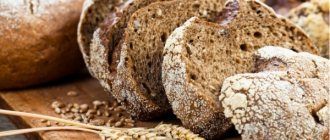In gastroenterological practice, there are often cases of inflammation of the mucous membrane of the digestive organs caused by the activity of bacteria, the consequences of injuries or improper diet. Most of the population of our country experiences stomach problems; both adults and children suffer from various gastrointestinal pathologies.
One of the serious diseases is erosive gastritis of the antrum (lower) stomach. In the absence of timely treatment, the pathology provokes a number of severe complications, including death in the event of bleeding.
Manifestation of pathology
Gastritis of the antrum of the stomach causes serious trouble for the patient. The acute form is characterized by:
- periodic pain accompanied by general weakness and malaise;
- nausea, vomiting mixed with gastric juice, sometimes with bleeding;
- flatulence;
- unstable stool;
- a feeling of bitterness, dry mouth.
Over time, with poor treatment, the disease enters the chronic stage, its clinical picture smoothes out. The pain subsides, the feeling of nausea stops. Only black stool with particles of dried blood reminds of the disease. These particles can color the stool unevenly and take on the appearance of tar-like inclusions. The reason for the coloring is persistent bleeding: blood entering the intestines turns black under the influence of hydrochloric acid
Despite the mitigation of external symptoms, erosive antral gastritis continues to develop at this stage:
- the area of erosion increases, the ulcers deepen;
- damage affects the endocrine glands and circulatory system;
- in especially severe cases, perforation (perforation) of the stomach walls occurs.
Causes of antrum gastritis
Before prescribing treatment, a complete examination of the patient is initially carried out, the results of laboratory tests are studied, on the basis of which the type of gastritis is determined.
Today, doctors distinguish between five types:
- surface;
- focal;
- atrophic;
- erythematous;
- grainy.
The main culprit in the occurrence of any type of antrum gastritis is the bacteria Helicobacter pylori. It is useful to know that they are “residents” of the microflora of many people, but at the same time they can make absolutely no statement about themselves, including not provoking a deterioration in their health.
If the human immune system is excessively weakened, nothing prevents the active proliferation of harmful bacteria. Due to the sharp increase in the number of Helicobacter bacteria, their negative impact on the gastric mucosa is not long in coming. Bacteria quickly invade the surface layer of the stomach, provoking an inflammatory process.
The most dangerous thing in this situation is that bacteria not only destroy the gastric mucosa, but also destroy the digestive glands. It is for this reason that doctors recommend seeking help immediately as soon as the first signs of pathology appear. The advanced form is very difficult to treat.
However, not only Helicobacter bacteria are the main culprits of this disease. There are several other reasons that provoke such a dangerous disease. Among them:
- being in constant stressful situations;
- improper diet;
- self-medication or taking medications in violation;
- alcohol abuse;
- smoking;
- circulatory failure.
Superficial antral gastritis, like its other varieties, can occur in those people who welcome the consumption of very hot food or excessively spicy, fatty foods.
Factors contributing to the development of pathology
The second and third groups of reasons often lead to the development of primary erosive antrum gastritis. Pathologies of these types occur in relatively young people due to social instability, psychotrauma, and a specific lifestyle. The secondary form is spoken of when the cause of a pathogenic disorder is organic changes in the body. In this case, pathogenic changes can occur in both the antrum and fundus of the stomach.
External and behavioral factors that provoke bacterial gastritis have been established. In addition to chronic pathologies of the gastrointestinal tract, these include:
- postoperative complications;
- exposure to hormonal drugs, cytostatics;
- damage to the mucous membrane by ethanol, nicotine;
- irritation of antrum tissues by spicy, hot foods;
- overload of the nervous system.
Diseases associated with erosive gastritis
As already noted, some forms of erosive gastritis are the cause of untreated diseases of the gastrointestinal tract. The most common sources of inflammation of the gastric mucosa are varieties of duodenitis. In some cases, gastritis independently acts as a causative agent of other pathologies.
Inflammation with swelling
The development of inflammation in the duodenum, accompanied by thickening of the folds of the mucous membrane, which leads to swelling of the organs, is called superficial duodenitis in medicine. As an independent pathology, duodenitis is rare. More often it is provoked by other diseases of the digestive tract, for example, inflammation of the small intestine or ulcers.
Symptoms of the course of the disease are determined by the degree of progress of duodenitis, the number of stages passed by the disease. In most situations, patients experience pain in the epigastric region. Symptoms typical of all types of inflammation of the digestive tract occur: nausea, impotence and high fever. During the transition of the disease from stage to stage, manifestations fade away for a short time.
Superficial duodenitis has two stages:
- The period of exacerbation is constant pain.
- Remission period - symptoms disappear.
The patient can go through both stages in a circle until the disease becomes chronic.
The causes of superficial duodenitis are similar to the factors influencing the progression of gastritis. In addition to them, the negative effects of toxins during acute and chronic poisoning and the influence of infection are highlighted.
Superficial duodenitis
Diagnosis and treatment
When making a diagnosis, it is necessary to collect tests of blood, intestines and stomach contents. Based on the data obtained, the doctor diagnoses the disease.
Therapy for superficial duodenitis involves a strict diet and regular visits to the attending physician. Antispasmodics and anti-vomiting medications help combat unpleasant symptoms. If the acidity level is high, the doctor prescribes antacid medications, inhibitors and drugs containing bismuth to the patient.
It is recommended to eat foods high in protein, juices from fruits and vegetables. You should eat at least 5-6 times a day. This will make it possible for the bile to function normally, and the secretion will not accumulate in the gallbladder.
Self-treatment and alternative medicine help little in the fight against superficial duodenitis.
Types of disease
Despite the different etiologies, the symptoms of pathologies of different types may be the same. There are two reasons for this phenomenon. Firstly, at various stages of development, gastritis of all types can be asymptomatic.
Secondly, with a long course, it is possible for diseases to flow from one form to another. For example:
- general weakening of the body has a beneficial effect on the activation of Helicobacter;
- extensive damage to the mucosa often extends to the duodenum and provokes reflux;
- untreated erosive antrum gastritis in many cases leads to organic disturbances in the functioning of the entire body.
Inflammation with wound formation
Erosive gastroduodenitis differs from other forms of duodenitis by the formation of many small wounds on the mucous membrane of the stomach and duodenum. Often an ulcer progresses based on the disease.
The manifestation of the disease depends on the location of the pathology. Most often, patients are worried about weakness, insomnia and headaches. There is a feeling of nausea, sometimes abdominal pain. No appetite. The main distinguishing sign of erosive gastroduodenitis is nausea with blood in the morning and at noon.
The formation of pathology is influenced by internal and external factors. External causes include all types of inflammation of the digestive organs. Among the internal factors there are:
- High level of acidity;
- Throwing the contents of the duodenum into the stomach;
- Liver diseases;
- Infections.
Diagnostic measures
Diagnosis of the disease is based on a complete and comprehensive examination of the patient. The patient must undergo many procedures: often the data from one or two is not enough to make a diagnosis. For example: an x-ray will not show the difference between dyspeptic syndrome and tissue ulceration.
Study stages include:
- Anamnesis collection.
- Physical examination. At this stage, an experienced doctor, using palpation, tapping and listening methods, will establish a primary diagnosis.
- Comprehensive laboratory and instrumental examination. This includes: ultrasound diagnostics, gastroendoscopy, biopsy, cytology and other methods.
- Monitoring the dynamics of the disease: during the study process, the doctor conducts it continuously.
Forms of antral gastritis
Antrum gastritis can have various forms and types, depending on the cause of the pathology, the development of the disease, the degree of structural damage, duration and the possibility of complications. According to the nature of the disease, they are distinguished:
- The acute form of antral gastritis is a self-developing inflammatory process, accompanied by pronounced symptoms and a rapid transition to a chronic condition. Occurs as a result of unfavorable environmental conditions or under the influence of other harmful influences.
- A chronic form that appears as a result of insufficient therapy for the acute form of gastritis. It is characterized by a slowly occurring clinical course, in the form of alternating periods of exacerbation and quiescence. As a result of development, it forms scars with atrophied foci on the mucous membrane. It may be accompanied by complications in the form of narrowing of the pyloric portion of the stomach with disruption of the passage of incoming food.
In addition to its forms, antrum gastritis can differ in the characteristics of its development and the nature of structural changes in the mucous membrane lining the stomach.
Focal type of antrum gastritis
This type has a chronic form with damage to multiple areas of the epithelium. As the inflammatory process develops, the affected areas atrophy, which disrupts the digestion of food and forms focal inflammation.
Erosive appearance of antrum gastritis
This type is the result of a superficial disease when treatment was insufficient or not carried out at all. The inner shell is affected with the appearance of foci of erosion in areas with accumulations of bacteria. As the disease progresses, the glands may be affected, scarring may form, and if the disease worsens, the inflamed areas may begin to bleed. The development of pathology is more often caused by poorly administered therapy, unhealthy diet or alcohol.
Superficial view of the antrum of gastritis
This species causes an infectious infection with the bacterium Helicobacter pylori, the result of the existence and vital activity of which is a decrease in the functioning of the glands, which can no longer neutralize excess acid in the gastric juice. As a result of increased acidity, the surface of the mucous membrane is affected; in this case, scars do not form. The main symptoms of this condition are pain in the intercostal space, attacks with heartburn and sour belching.
Atrophic type of antrum gastritis
It is characterized by changes in the epithelium of the stomach with atrophy of its mucosa and lack of gland secretion. The condition is complicated by the inability of the stomach to digest the food entering it. This disease in its chronic form is considered to be the period preceding a malignant neoplasm.
Chronic type of antrum gastritis
The disease always begins with an acute form, which quickly becomes chronic. The chronic form is the most insidious, since the symptoms of the disease appear only when the deeper layers of the mucosa are affected and characteristic changes occur in it with atrophied areas and erosions.
Principles of treatment
When erosive antral gastritis is diagnosed, treatment is prescribed taking into account the type of lesion and the stage of development of the disease. The individual condition of the body and the presence of complications are taken into account.
When choosing therapeutic methods, the doctor must identify the factors that contributed to the occurrence and development of inflammation. This task is as important as establishing the type of gastritis.
The general treatment regimen also includes:
- ensuring a strict diet as the most important factor in recovery;
- choosing an effective therapeutic method to eliminate pathogenic factors.
The doctor decides whether to limit himself to drug treatment or whether surgery is necessary.
If a diagnosis is made of gastritis of the first, autoimmune type, the most effective remedy will be enzymes that stimulate the activity of the pancreas and other elements of the endocrine system. To cure bacterial gastritis, a course of antibiotics, antiulcer and antidiarrheal drugs is prescribed.
Painful manifestations of gastritis of the third type, the cause of which is reflux, are eliminated with the help of drugs aimed at normalizing gastrointestinal motility and neutralizing an excessively acidic environment.
In all cases, the doctor must immediately solve five problems:
- Relieve inflammatory syndrome.
- Reduce the intensity of gastric juice secretion.
- Normalize intestinal muscle motility.
- Restore the structure of affected tissues.
- Prevent relapses.
In case of severe pathologies, the appearance of tumors, bleeding, the patient is indicated for surgical intervention.
Diet is an important component of the treatment of erosive antral gastritis. In acute cases, diet No. 1 is indicated. In the process of eliminating pathogenic factors, as the condition improves, the doctor prescribes diet No. 5. In order for the therapy to be effective and medical care to be complete, the patient must adhere to strict nutritional rules.
Diagnostics
The erosive form of gastritis is considered a serious deviation in the functioning of the stomach; for the sake of your own health, you should immediately consult a doctor. A timely diagnosis and appropriate treatment contribute to the successful overcoming of the disease.
When diagnosing a patient who complains of abdominal pain, instrumental research methods are used. Fibrogastroscopy with targeted biopsy is considered an effective and efficient method of diagnosis. The method accurately determines the location of scars and the severity of damage to the gastric mucosa. In some cases, the patient is referred for fluoroscopy, ultrasound or computed tomography.
Therapy is carried out under the close supervision of a doctor - until the disease is completely eliminated, the patient is in danger. Often, severe hemorrhage causes death; if gastritis is suspected, the disease must be treated immediately.
Diet for gastritis
The diet for erosive damage to the walls of the stomach is the same as for an ulcer. Dishes that stimulate the secretion of gastric juice and irritate the mucous membrane are excluded from the therapeutic diet. Preference is given to boiled, ground food, heated to human body temperature. Smoking, pickling, chocolate, tea, coffee are strictly prohibited. The diet menu should contain low-fat foods:
- boiled beef;
- poultry meat;
- rabbit meat;
- sea fish;
- stale bread, preferably with bran;
- fermented milk products.
Nutrition
In the acute period, the patient is prescribed diet table No. 1, followed by transition to diet No. 5. Patients with an erosive form of the disease should not eat foods that stimulate the production of gastric juice, as well as foods, vegetables and fruits containing plant acids. Excluded:
- fried;
- spicy;
- spices;
- fresh bakery;
- baked goods;
- vegetables with essential oils (onions, garlic).
The menu includes steamed food, baked or stewed vegetables, and various cereals. It is better to replace butter with vegetable oil, but it should not be heat treated. Only low-fat varieties of meat are recommended. Meals should be frequent, the dishes should be easily digestible, and the portions should not be large. This technique makes it possible to quickly restore damaged mucous membranes and normalize the digestion process.
Chronic antral gastritis
Chronic antral gastritis can occur in active and inactive forms. Not to be confused with reactive type. This is called reflux gastritis or chemical gastritis.
The degree of inflammation (mild, moderate, severe gastritis) and activity (low degree of activity or grade 1, moderately active or grade 2, high degree of activity or activity 3) is determined by the results of FGDS and histological analysis.
These criteria depend on the characteristics of the life activity of Helicobacter pylori and are identified by the degree of penetration of such cells into the gastric mucosa:
- lymphocytes;
- plasma cells;
- neutrophil granulocytes.
Chronic superficial antral gastritis of low activity may have mild symptoms or not appear at all. While the highly active version causes significant discomfort.
Chronic gastritis is dangerous because its progression leads to structural changes in the wall of the stomach with atrophy of the mucosa and the phenomena of intestinal metaplasia.
Symptoms
The intensity of hypertension symptoms depends on the degree of damage to the digestive organ. During the period of remission, signs of the disease may resemble indigestion. If the inflammatory process progresses, the patient experiences spasms, severe pain in the stomach area, pain in the left hypochondrium, heartburn and burning in the abdominal cavity.
At the initial stage of the disease, appetite remains normal. In severe forms of the disease, the patient experiences an attack of nausea even at the sight of food.
Other symptoms:
- constant feeling of fullness in the stomach;
- regular attacks of heartburn;
- tendency to constipation or diarrhea;
- discomfort in the area of the digestive organs;
- gray and dry coating on the tongue;
- tendency to attacks of vomiting and nausea;
- bloating and flatulence;
- sudden spasms of the stomach walls;
- lack of appetite;
- unpleasant taste in the mouth;
- general weakness of the body;
- drowsiness after eating.
Video on the topic: Antral gastritis (superficial, chronic, focal): what is it?










